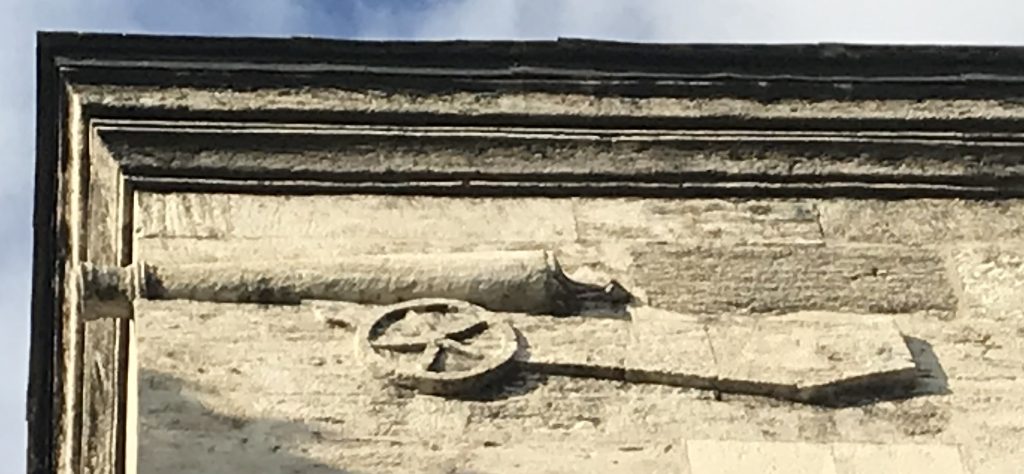“Arsenal”
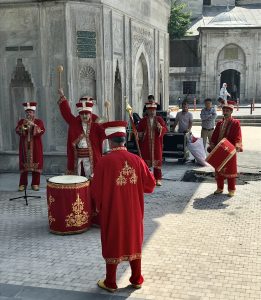
Named after the Arsenal that is one of its most striking monuments, Tophane is one of those places that was until recently barely noticed as people raced through İstanbul on their way from the Galata Bridge to the Dolmabahçe Palace. Now, though, it is an increasingly trendy extension of Karaköy and Galata with its heart still around the Arsenal and the lovely Kılıç Ali Paşa Cami across the road from it.
Two important roads meet at Tophane. One is the main Bosphorus coast road, the other Boğaskesen Caddesi which runs up to Galatasaray passing several interesting little art galleries whose arrival in a traditional neighbourhood has not always gone down well with the locals.
In an imaginative move the old Museum of Painting and Sculpture (Ressam ve Heykel Müzesi) that was closed for more than a decade has been moved into a building beside the alley leading to the İstanbul Modern in the Galataport meaning that it’s now possible to see the entire history of Turkish painting within the space of a couple of blocks.
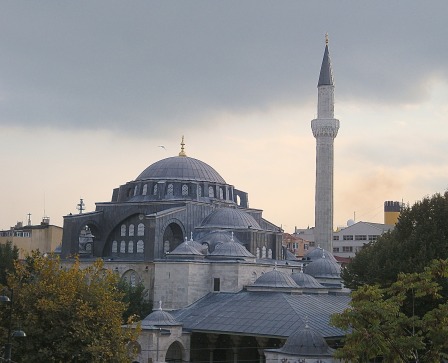 Around Tophane
Around Tophane
If you get out of the tram at the Tophane stop you will immediately see the gorgeous Kılıç Ali Paşa Cami on the water side of the road. Recently restored so that its cascade of lead-roofed domes is now much easier to appreciate, the mosque was a work of the great Ottoman architect Sinan and completed in 1580 by which time he was in his nineties. It was built for Admiral Kılıç Ali Paşa, the only captain who managed to lead his ships safely away from the naval debacle at Lepanto in 1571 that marked the end of Ottoman supremacy in the Mediterranean.
Right beside the mosque the hamam that was part of the complex now offers an upmarket bathing experience that generally justifies the steep price tag. The medrese has also been restored.
Facing the mosque across the side street running down to the water is the spectacular Tophane Çeşmesi (Tophane Fountain), a marble fountain covered in carvings of fruit and flowers that was originally built for Sultan Mahmud I in 1732, then rebuilt in 1957. It stands on ground that was once a military parade ground and then a fruit and vegetable market. Behind it is the entrance to the Galataport.
 Heading west along the coast road from the fountain you will see a graceful green and white pavilion. This is the Tophane Kasrı, designed for Abdülmecid in 1852 by the British architect, William James Smith; from it the sultan was able to review his troops being drilled in the parade ground in front of it. After the end of the Turkish War of Independence the Bosphorus Commission met here to agree terms for international access to the strait linking the Marmara and Black Seas. It was restored in the 2020s.
Heading west along the coast road from the fountain you will see a graceful green and white pavilion. This is the Tophane Kasrı, designed for Abdülmecid in 1852 by the British architect, William James Smith; from it the sultan was able to review his troops being drilled in the parade ground in front of it. After the end of the Turkish War of Independence the Bosphorus Commission met here to agree terms for international access to the strait linking the Marmara and Black Seas. It was restored in the 2020s.

Right beside the Tophan Kasrı is the magnificent and fully restored Nusretiye Cami (Victory Mosque), commissioned from Krikor Balyan in 1822 by Sultan Mahmud II to commemorate his overthrow of the Janissaries in the so-called “Auspicious Incident”. The Balyans may have been remarkable architects in general but in this case they made a mistake because the thin minarets fell down not long after the mosque opened in 1826 and had to be rebuilt. By this time the imperial mosques had shed their load of ancillary buildings although this one still kept a private entrance for the sultan leading to a fine box inside from which he could take part in services whole preserving his privacy.
The sebil (water dispensary) beside the mosque looks as if it should always have been part of the complex but in fact stood across the road before widening necessitated a move. An alley leading to the Galataport runs down to the waterside beside it.
The Museum of Painting and Sculpture (Ressam ve Heykel Müzesi) offers the chance to see how Turkish painting has evolved from the early 19th century when the prohibition on representing living things was lifted. The lovely top floor is devoted to the works of the so-called Turkish orientalist artist, Osman Hamdi Bey.
 Across the road from the Tophane Fountain is the Tophane itself, its lower part dating back to the reign of Süleyman the Magnificent while its pretty multi-domed roofline was an 1803 addition commissioned by Sultan Selim III. Tiny cannons carved on the corners of the building are a reminder of its original use even though an interior that once housed munitions is now reused as temporary exhibition space.
Across the road from the Tophane Fountain is the Tophane itself, its lower part dating back to the reign of Süleyman the Magnificent while its pretty multi-domed roofline was an 1803 addition commissioned by Sultan Selim III. Tiny cannons carved on the corners of the building are a reminder of its original use even though an interior that once housed munitions is now reused as temporary exhibition space.
Adjoining the arsenal is a small single-domed brick building that is also used for art exhibitions. Beyond that a narrow road slopes up to Cihangir. Ruins beside it are of an old barracks that was being excavated although work seems to have stalled (2024).
Boğazkesen Caddesi strikes uphill to Galatasaray from right beside the Arsenal. Almost immediately Defterdar Caddesi branches off on the right, offering a very steep climb up to Cihangir passing the abandoned Italian Hospital (1876). On the corner is a beautifully restored mansion block designed in 1905 by EG Ladopoulos who signed his name on it in stone. 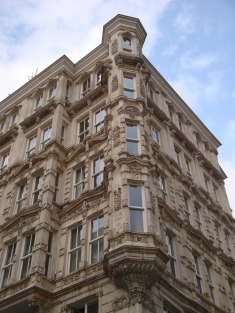
On the lefthand side of the road is the small and not especially interesting Karabaş Tekkesi (Lodge) which dates back to the early 16th century but was effectively rebuilt in 1962. It operates a popular soup kitchen and always erects an iftar çadırı (iftar tent) on adjacent land during Ramazan.
Boğazkesen passes through an area which has been associated with the Italians since the late Middle Ages and today it still boasts a “Little Italy” off to the left where the Tomtom Suites were created out of a convent for Franciscan nuns built in 1901 across the road from the Italian Consulate and the Italian School.
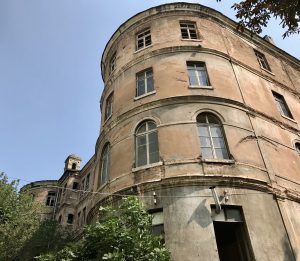 Back on the main road on the left a flat, austere wall blocks from view what was once the French St Jospeh Orphenilat (Orphanage) and used to house a plaster workshop. The grounds have now been tidied up, the chickens evicted, and tea and coffee facilities put in place as it converts into the TophaneMekan. Otherwise the street is best known for its small art galleries which host a range of temporary exhibitions.
Back on the main road on the left a flat, austere wall blocks from view what was once the French St Jospeh Orphenilat (Orphanage) and used to house a plaster workshop. The grounds have now been tidied up, the chickens evicted, and tea and coffee facilities put in place as it converts into the TophaneMekan. Otherwise the street is best known for its small art galleries which host a range of temporary exhibitions.
Eating
Fasuli Lokantası Turkey might not seem the most obvious place to go to eat baked beans but in fact kuru fasulye, the Turkish take on the dish, is a household staple. This is one of the best places in the city to sample it. İskele Caddesi No. 10, Tel: 0530-264 1880
 Sleeping
Sleeping
Fragments Hotel. Tel: 0212-251 4840
Tomtom Suites. Tel: 0212-292 4949
Witt İstanbul Suites. Tel: 0212-293 1500
Transport info
The Tophane tram stop is handily situated right in front of the Kılıç Ali Paşa Cami although since the opening of the Galataport it has struggled to cope with the demand, especially when more than one cruise ship is docked.
Nearby areas
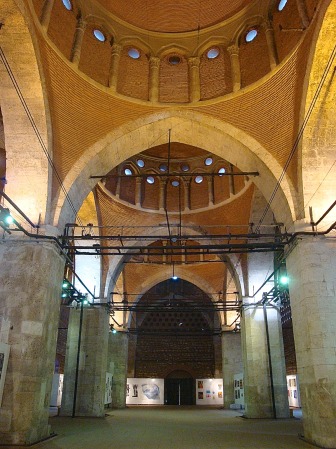 The Arsenal is used as an art gallery today
The Arsenal is used as an art gallery today
